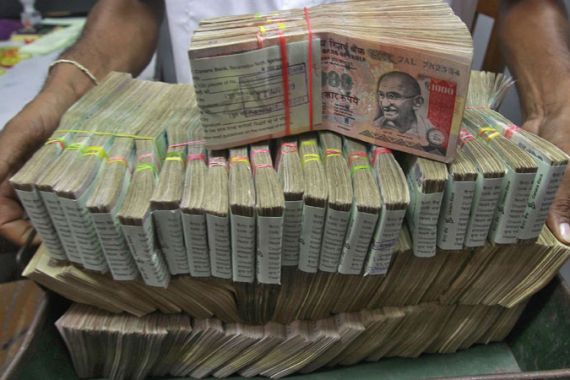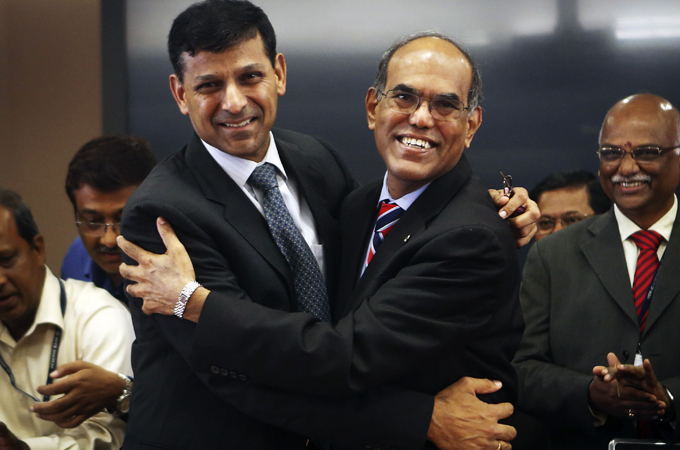Indian central bank unshackles foreign banks
Two months into his job, new RBI governor offers foreign banks greater opportunity to tap into Indian market.

He’s just a little more than two months into his job, but new Reserve Bank of India (RBI) Governor Raghuram Govind Rajan seems to be making all the right moves as far as reviving the country’s ailing economy is concerned. At least till now.
Since taking over on September 4, concerns over rupee depreciation has eased. Though the Indian currency depreciated again last week, it had more to do with global factors. Rajan, known for his good looks that has earned him the moniker “rock star governor’ has also set his sight on reforming the banking sector.
In what could be called a radical step considering the rather conservative approach of the RBI, Rajan has plans to treat foreign banks at par with Indian banks.
He has dangled a carrot to foreign banks to get their entities incorporated in India as wholly-owned subsidiaries (WOS) of their parent firms.
These are still early days to consider it as a game-changer. Many foreign banks have been present here for a long time but they have never practised universal banking, they are mainly into corporate banking, trade finance etc... they can have joint ventures, mergers and acquisitions.
Rajan, who in his previous stints was Chief Economist at the IMF and is currently on leave from the University of Chicago where he was professor of finance, believes that once foreign banks convert themselves into WOS, they will be able to reap the benefits of a growing Indian economy of $2 trillion, large parts of which still remain untapped.
“As a locally incorporated bank, the WOSs will be given near national treatment which will enable them to open branches anywhere in the country at par with Indian banks (except in certain sensitive areas where the RBI’s prior approval would be required). They would also be able to participate fully in the development of the Indian financial sector,” the RBI said in its Policy Paper.
While incentivising the global banks to get incorporated in India, the regulator makes no bones about the fact that the country too, like the rest of the world, needs to learn from the financial meltdown of 2008.
“The framework for setting up of WOS by foreign banks in India has now been finalised taking into account the feedback received on the Discussion Paper and factoring in the lessons from the crisis which favours a subsidiary mode of presence from financial stability perspective,” the policy report adds.
But just how juicy is the carrot for foreign banks, some of which like the Standard Chartered Bank, Citi and HSBC have been in India for more than half a century with a well-spread branch network? Will these banks rush for the offering from the new RBI Governor?
“These are still early days to consider it as a game-changer. Many foreign banks have been present here for a long time but they have never practised universal banking, they are mainly into corporate banking, trade finance etc. Now they will be offered a level playing field to open in hinterland. It is not necessary to have a brick and mortar structure – they can have joint ventures, mergers and acquisitions,” says Robin Roy, Director (Financial Services) at PWC Consulting.
Takeover fears
There are, however, fears that small-sized private banks like Yes Bank, Kotak Mahindra Bank, Development Credit Bank and Federal Bank can be the takeover targets of the global financial majors.
Abizer Diwanji, Partner and National Leader, Financial Services, Ernst & Young, feels the liberalised rules of the game would be of particular help to those foreign banks which currently have three-four branches but have big plans for India.
“For them, these guidelines have significance,” he says. “The problem earlier was that at best India would allow 12 branches a year to overseas banking firms under its WTO obligation – which meant a bank would not get more than one or two branches a year, thus limiting its scope for expansion.”
 |
| Raghuram Rajan (L) is a suave, unflappable University of Chicago economist [Reuters] |
Over and above the RBI receiving enhanced regulatory powers, the new regime would help Indian banks like the State Bank of India and ICICI Bank to expand their overseas operations since the liberalisation is based on reciprocity – those allowing Indian banks would be given opportunity for their banks in India – like bilateral flying rights in the aviation sector.
“The policy is guided by the two cardinal principles of (i) reciprocity and (ii) single mode of presence,” according to Alpana Killawala, Principal Chief General Manager, RBI.
At the same time, the central bank has provided checks and balances to ensure that global banks do not gain monopoly. Not less than 50 per cent of the directors should be Indian nationals/Non-Resident Indians/Persons of Indian Origins and not less than one-third of the directors should be Indian national residents.
“Such checks and balances are there in most of the countries, including in the developed world since financial assets are highly fungible,” argues D S Rawat, Secretary General of Associated Chambers of Commerce and Industry of India (ASSOCHAM).
The foreign banks would also be subjected to obligations vis-a-vis domestic banks, like 40 percent lending to priority sectors like agriculture and small businesses etc.
The opening of new doors for foreign banks may not be a big bang announcement, but it certainly is being viewed by many as a courageous step from Manmohan Singh’s coalition government, which is in the last lap of its second term.